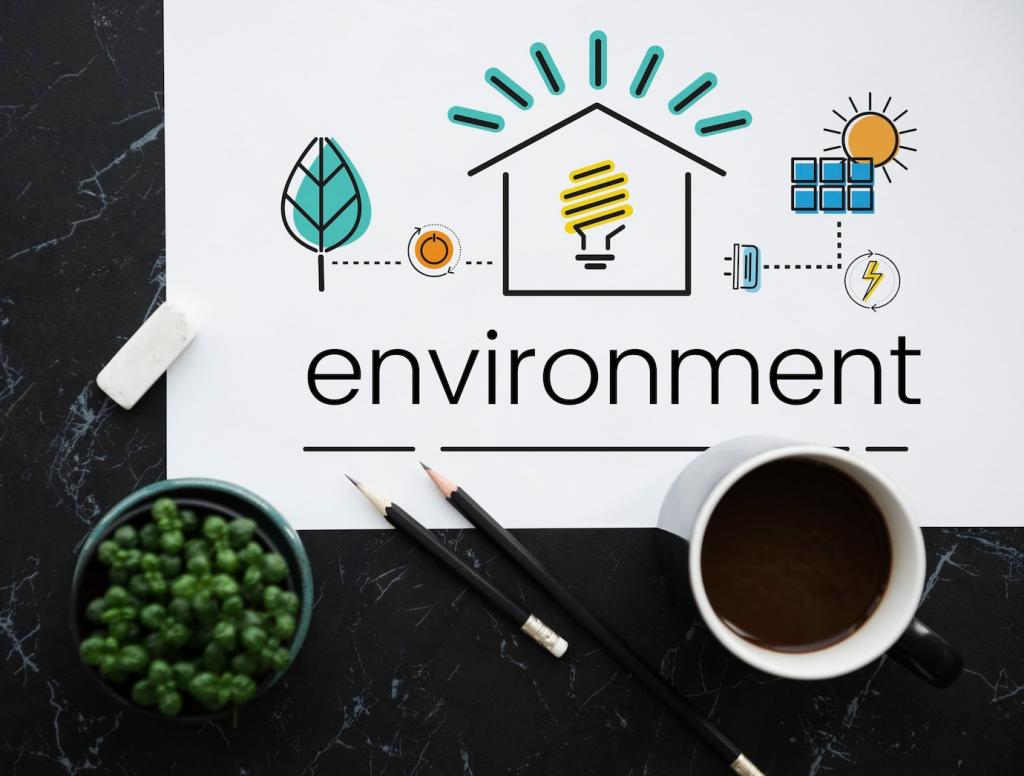Trends in Green Cleaning for Furniture
Chosen theme: Trends in Green Cleaning for Furniture. Step into a healthier, lower-waste way to care for sofas, tables, and heirlooms with science-backed tips, real stories, and practical routines. Subscribe, comment, and shape the conversation on safer homes and smarter, planet-friendly furniture care.

Why Green Cleaning for Furniture Matters Now
Health-first homes start with what you spray and wipe
Indoor air can be more polluted than outdoor air, and conventional furniture cleaners may add unnecessary fragrances and solvents. By choosing low-VOC, plant-based formulas and fragrance-free options, you reduce irritants for kids, pets, and guests. Share your switch stories and let others learn from your wins.


Sustainability that also protects your investment
Green cleaning emphasizes gentle, material-appropriate care, which can extend the life of wood finishes, upholstery fibers, and leather. Fewer harsh chemicals mean fewer micro-cracks, discoloration, and residue. Tell us which green habits have helped your furniture age gracefully, and inspire fellow readers to try them.
Plant-Based and Biodegradable Formulas Leading the Market
Look for clear ingredient lists and credible third-party certifications like EPA Safer Choice and Green Seal. Watch for vague claims such as “eco-friendly” without proof. If a brand explains surfactants, solvents, and preservatives plainly, you can better match a cleaner to your furniture’s needs.

Plant-Based and Biodegradable Formulas Leading the Market
Enzymes can break down protein, starch, and fat-based stains at lower temperatures and with less scrubbing, protecting delicate fibers. Many modern formulas pair enzymes with biodegradable surfactants for deeper cleaning. Test in a discreet spot first, then share your results so others can compare approaches.
High-quality microfiber can capture fine dust and grime with just water, reducing the need for detergents. Use tight-weave cloths for hard surfaces and plush weaves for upholstery. Maintain a color-coding system, and wash cloths separately to keep performance high. What’s your favorite weave and routine?
Low-Water and Waterless Cleaning Trends
Dry foams distribute minimal moisture, helping prevent water rings and long drying times on sofas and chairs. Work in small sections, blot rather than scrub, and ensure good airflow. This method is perfect for cool, damp seasons when drying is slow. Share your before-and-after results with us.
Low-Water and Waterless Cleaning Trends
Refill, Concentrate, and Packaging Innovations
Many conventional cleaners are mostly water. Concentrated refills shrink bottles, cut freight emissions, and save storage space. Mix only what you need to keep solutions fresh. If you have a favorite ratio for upholstery or wood, post it below to help others dial in their bottles.
Refill, Concentrate, and Packaging Innovations
Glass or aluminum sprayers paired with silicone sleeves are sturdy, easy to sanitize, and endlessly reusable. Label them clearly to avoid cross-contamination between wood polish, upholstery cleaner, and all-purpose solutions. Got a label system or QR code trick? Share it so our community can copy it.





Certification, Testing, and Transparency
EPA Safer Choice and Green Seal review formulas against rigorous criteria. When you see these symbols, you gain confidence that performance and safety were evaluated. If a favorite cleaner earned certification, shout it out in the comments so readers can build a verified shopping shortlist together.
Certification, Testing, and Transparency
Brands that publish full ingredient lists and provide easy-access Safety Data Sheets show respect for consumers. QR codes on bottles make verification quick. Ask manufacturers questions about preservatives, surfactants, and fragrance allergens. Post responses you receive—transparency grows when we ask, document, and share as a community.
Certification, Testing, and Transparency
Patch-test two certified cleaners on the same upholstery code and compare results for stain removal and drying time. Track residue and smell. Your feedback helps everyone buy smarter. Drop your mini-reviews below, and subscribe to see community test results summarized in future posts and guides.
Caring for Different Furniture Materials, the Green Way
Avoid harsh solvents that strip finishes. Use a damp microfiber cloth and a pH-balanced, plant-based cleaner designed for leather. Condition sparingly with a breathable, plant-derived balm. Tell us which conditioners truly absorbed without greasiness—your picks help others rescue tired armrests and revive old favorite chairs.
Caring for Different Furniture Materials, the Green Way
Dust with dry microfiber to prevent micro-scratches, then clean with a lightly damp cloth using mild soap. Keep water rings away with coasters and quick blotting. If you’ve revived a vintage veneer without sanding, share your process and products so the community can replicate your careful success.
The 15-minute weekly reset
Set a timer, grab color-coded microfiber cloths, and do a room loop: dust wood, spot-check upholstery, and condition high-touch surfaces monthly. Consistency prevents buildup, meaning gentler cleans. Share your checklist in the comments, and subscribe for printable routines tailored to different home sizes and lifestyles.
Allergen-aware seasons and smart tools
During pollen peaks, vacuum upholstery with a HEPA tool, wipe entry furniture daily, and launder washable covers more frequently. Stick with fragrance-free cleaners to reduce triggers. What HEPA attachments or fabric settings actually help you? Your tips can transform someone’s spring from sneezy to serene.
Join our green cleaning circle
Comment with your toughest furniture stain, the green cleaner you used, and the result. We’ll compile community-tested solutions in a subscriber guide. Invite a friend who’s starting their sustainable journey, and help them skip the trial-and-error. Together, we make healthy, beautiful spaces feel effortless.
Join our mailing list
